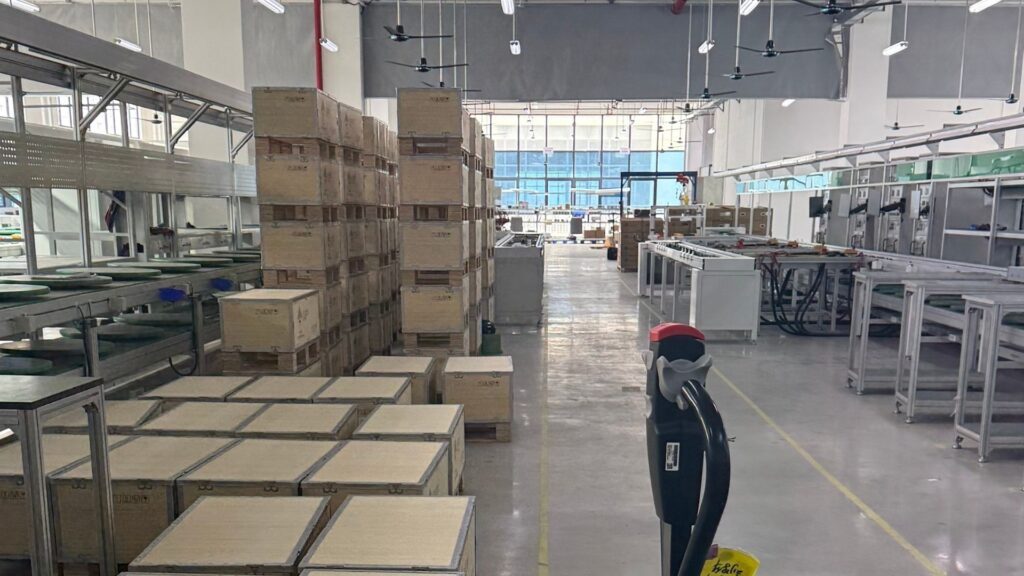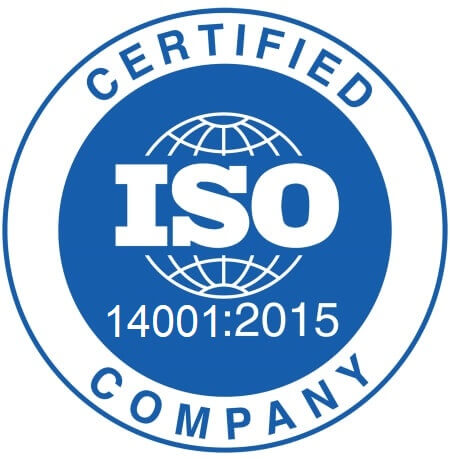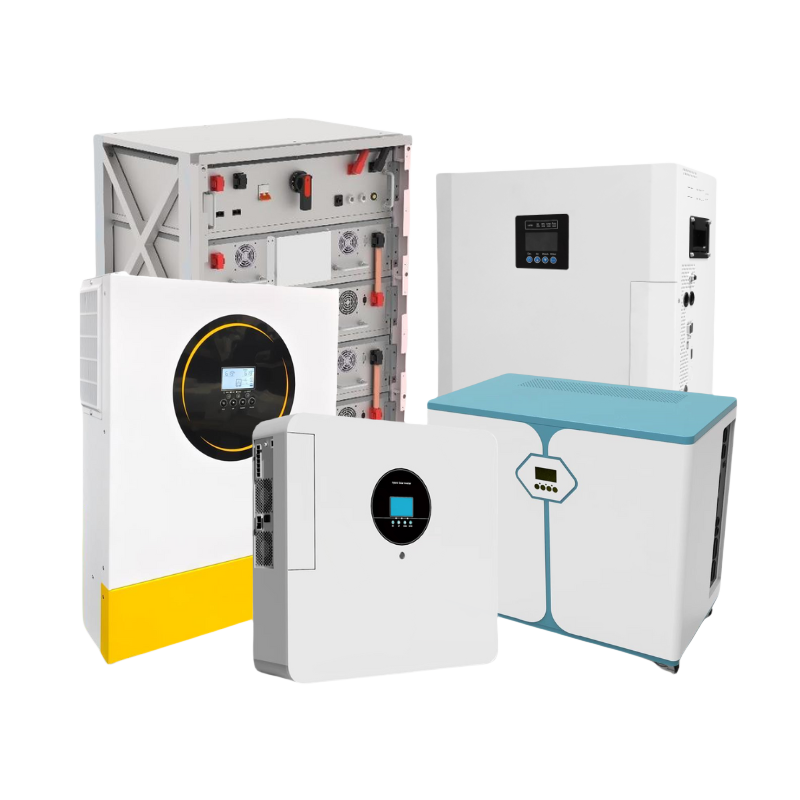To maintain lithium batteries for a longer lifespan, avoid full discharges and frequent charging to 100%. Keep them between 20–80% charge. Store unused batteries at around 50% SoC in a cool, dry place. Avoid high heat, deep discharge, or leaving them unused for long periods. Charge after each use.
Let’s go deeper into what makes or breaks lithium battery life—especially for solar setups, distributors, and anyone who wants reliable, long-lasting performance.
Part 1: What Affects the Lifespan of a Lithium Battery?
Lithium battery lifespan is shaped by how the battery is used, charged, and stored, as well as the environment it operates in. Even high-quality batteries lose capacity over time, but the rate of degradation depends heavily on several key factors.
1. Cycle Aging
Every charge and discharge cycle slightly wears down a lithium battery. A full cycle from 100 percent to 0 percent causes more damage than shallow cycling between moderate percentages.
Deep discharging increases mechanical stress on the electrodes, while charging to 100 percent exposes the battery to high voltages that accelerate chemical breakdown.
Batteries used with frequent deep cycles typically age two to three times faster than those operated in a moderate SoC window.
2. Calendar Aging
Even when a lithium battery is not in use, internal chemical reactions continue to occur. This natural aging is known as calendar aging and becomes severe when the battery is stored fully charged, fully depleted, or left unused for long periods.
High state-of-charge storage causes oxidation, while low-voltage storage can damage electrodes irreversibly.
3. Temperature
Temperature has a stronger impact on lithium battery life than most people realize. High heat accelerates electrolyte decomposition and increases internal resistance, while freezing temperatures reduce performance and can cause lithium plating during charging.
Constant exposure to extreme temperatures or frequent temperature swings significantly shortens lifespan.
4. Overvoltage and Undervoltage Stress
Although the BMS provides protection, frequently pushing voltage limits still weakens the battery.
Overcharging speeds up oxidation, and over-discharging forces the battery into unstable voltage zones. Even if the BMS intervenes, the stress still contributes to capacity loss.
By understanding these factors, users can apply better practices to extend battery life effectively.

Part 2: How to Maintain Lithium Batteries for a Longer Lifespan
Understanding these factors makes it clear why lithium batteries fail faster under poor operating conditions. The good news is that most of this aging can be minimized. By adjusting how you charge, use, and store your batteries, you can significantly slow degradation and extend service life.
1. Keep Batteries in the Ideal State of Charge Range
Maintaining the right State of Charge is one of the simplest yet most powerful ways to extend lithium battery life. Lithium cells are highly sensitive to voltage stress, and staying too close to either extreme—fully charged or deeply discharged—accelerates chemical aging.
1.1 Avoid Charging to 100 Percent Daily
Charging a lithium battery to full capacity places the cells under sustained high voltage, which accelerates chemical reactions that wear down the cathode. For everyday use, there is rarely a need to reach 100 percent.
Keeping the charge lower reduces stress, slows calendar aging, and helps maintain long-term capacity. Save full charges only for situations where extended runtime is truly required.
1.2 Avoid Deep Discharge Below 10–20 Percent
Taking a battery down to very low levels forces the cells into unstable voltage zones where internal resistance increases and heat may build up.
Recharging before reaching 20 percent is far healthier for the electrodes and prolongs cycle life. Deep discharge should be avoided during both regular operation and storage.
1.3 Use Partial, Frequent Charging
Lithium batteries benefit from shallow charging cycles. Instead of waiting for the battery to empty, charge more often but stop before a full top-up.
This approach minimizes voltage stress and reduces mechanical strain on the electrode materials, similar to battery management strategies used in electric vehicles.
1.4 Keep Storage SoC at 40–60 Percent
When a battery is not used for weeks or months, storing it at a moderate state of charge helps slow calendar aging. Levels between 40 and 60 percent prevent both high-voltage stress and harmful deep depletion.
For long-term storage, check and recharge the battery every few months to maintain stability.

2. Control Temperature During Use, Charging, and Storage
Keeping lithium batteries within a safe temperature range is essential for slowing chemical aging and protecting internal components, and the following practices help you manage heat and cold effectively.
2.1 Keep Operating Temperature Between 15°C and 30°C
Temperature has a direct and immediate impact on lithium battery aging. Operating in high heat accelerates electrolyte breakdown, increases internal resistance, and shortens overall cycle life.
In solar installations, where ambient temperatures can rise quickly, ensure the battery is placed in a shaded, well-ventilated area. Avoid positioning it near inverters, controllers, or windows where radiant heat can build up and cause long-term damage.
2.2 Avoid Charging in High Heat
Charging a battery that is already warm significantly increases internal stress. High temperatures combined with incoming charge create more chemical strain inside the cells.
Always allow the battery to cool before charging and ensure adequate airflow around the enclosure. Improving ventilation or adding simple cooling measures helps maintain safer, more stable charging conditions.
2.3 Avoid Charging Below 0°C
Charging at freezing temperatures can trigger lithium plating, a permanent form of damage that reduces capacity and can lead to internal short circuits.
In cold climates, use batteries with integrated heaters or store them indoors. Let the battery gradually warm to safe temperatures before applying charge.
2.4 Ensure Proper Airflow in Battery Enclosures
Enclosed battery spaces must allow heat to escape. Use vents, fans, and spacing between battery units to prevent heat buildup. Consistent airflow keeps temperatures stable and greatly reduces thermal stress during both charging and operation.

3. Use the Right Charger and Correct Charging Settings
Using the correct charger and proper charging parameters is essential for protecting lithium batteries from voltage stress, overheating, and premature aging. Even with a built-in BMS, an unsuitable charger or incorrect system settings can push the battery outside its safe operating limits.
3.1 Match Charger Specifications With Battery Chemistry
Lithium batteries require chargers specifically designed for their voltage and chemistry. A mismatched charger may deliver incorrect current or voltage, leading to performance loss or accelerated wear. Always confirm compatibility with LiFePO₄, NMC, or other chemistries before use.
3.2 Avoid Universal or Unregulated Chargers
Low-quality or “universal” chargers often fail to control cutoff voltage accurately. Even slight overcharging increases internal stress and heat. Using reliable, well-regulated chargers prevents these risks and ensures consistent performance.
3.3 Prefer Slow Charging for Daily Use
Fast charging generates extra heat and speeds up aging. For routine use, choose slower charging rates around 0.3C to 0.5C. Reserve higher charging currents only for situations where quick turnaround is necessary.
3.4 Set the Correct Parameters in Solar Controllers
In solar systems, MPPT or PWM controllers must be programmed to match the battery’s rated voltage and charging profile. Proper bulk, absorption, float voltages, and cutoff settings are essential for long-term health. Always follow the manufacturer’s guidelines when configuring solar equipment.

4. Prevent Over-Discharging and Over-Loading
Preventing batteries from operating at extreme limits is key to maintaining stable performance and protecting internal components. Over-discharging and over-loading both create unnecessary stress that accelerates chemical wear and shortens lifespan.
4.1 Follow Recommended Depth of Discharge (DoD)
The deeper a battery is discharged, the more stress it places on the electrodes. Although LiFePO₄ batteries tolerate deep cycles better than other chemistries, routinely using more than 80–90 percent of the capacity accelerates aging. Keeping daily use above 20 percent helps maintain longer cycle life.
4.2 Size the Battery Bank Properly
If the battery frequently reaches low SoC, it indicates insufficient capacity. Expanding the system with additional batteries or parallel units spreads the load across more cells, reducing stress and improving overall longevity.
4.3 Avoid Overloading the Battery
Drawing more current than the battery is designed for increases heat and voltage drop. Always confirm inverter surge ratings and ensure your loads are within the battery’s continuous discharge limits to prevent long-term damage.
5. Protect the Battery Physically
Physical protection is often overlooked but plays a crucial role in maintaining long-term battery health. External factors such as dirt, moisture, and vibration can gradually weaken connections, increase resistance, or damage sensitive electronic components inside the battery pack.
5.1 Keep Terminals Clean
Dirty or oxidized terminals create resistance, which leads to heat buildup and inefficient power transfer. Inspect and clean terminals regularly with a dry cloth to maintain stable performance.
5.2 Prevent Moisture Exposure
Moisture can corrode terminals, damage the BMS, and cause electrical faults. Always install batteries in dry, well-protected environments and avoid areas prone to leaks or condensation.

5.3 Reduce Vibration or Shock
Continuous vibration or sudden impact can loosen internal welds and connections. Use shock-absorbing pads for mobile installations and handle batteries carefully to prevent mechanical stress.
6. Monitor Battery Health Regularly
Regular monitoring is essential for detecting early signs of battery degradation and avoiding unexpected failures. By checking key performance indicators and reviewing battery behavior over time, users and installers can intervene before minor issues develop into costly problems.
6.1 Monitor Cell Voltages and Temperatures Through the BMS
A quality BMS offers real-time insights into cell voltage, temperature, current flow, and internal resistance. Consistently reviewing this data helps you identify abnormal patterns such as rising resistance or uneven temperatures, which often signal internal stress.
6.2 Check for Early Warning Signs
Warning signs may include unusual heat, accelerated capacity loss, imbalance between cells, or repeated BMS cutoffs. These issues indicate changes in chemical stability or mechanical wear and should be addressed promptly through inspection or recalibration.
6.3 Perform Periodic Capacity Tests
For long-term systems, especially in solar and commercial applications, perform capacity tests annually or after extended storage periods. Measuring actual usable capacity reveals early degradation and helps plan maintenance or replacement before performance drops significantly.

Conclusion
Extending lithium battery life mainly comes down to avoiding extremes: keep charge levels moderate, control temperature, use proper charging settings, and monitor battery health regularly. These simple habits greatly slow aging and improve long-term reliability for solar systems, backup power, and daily applications.
For better performance from day one, choosing a trusted supplier is just as important. SolarCtrl builds every LiFePO₄ battery with strict quality control and advanced BMS protection to deliver longer life and stable output. Contact SolarCtrl to get reliable, long-lasting lithium battery solutions.
FAQs
1. How often should I update the firmware on my battery’s BMS or inverter?
Many modern systems release firmware updates that improve charging logic or safety features. Check with the manufacturer every 6 to 12 months and update only using official tools.
2. Does storing lithium batteries in a fireproof box affect their lifespan?
No, storage in a fireproof or metal box does not harm the battery as long as ventilation is adequate. Avoid sealed airtight containers where heat can build up.
3. Can I mount a lithium battery vertically or upside down?
Most LiFePO₄ batteries can be mounted in multiple orientations because they contain no free-flowing liquid. Always confirm with the manufacturer’s installation guidelines.
4. Do lithium batteries need an equalization charge like lead-acid batteries?
No. Lithium batteries do not require equalization charging. Doing so can damage the cells.
5. How do I know if my inverter or charge controller is compatible with lithium batteries?
Check whether it supports custom charging profiles or has a dedicated LiFePO₄ setting. If it only supports lead-acid modes, adjustments may be limited.
6. How long can a lithium battery stay unused before it needs attention?
Generally 3 to 6 months. After that, check voltage and recharge to the recommended storage level.






















